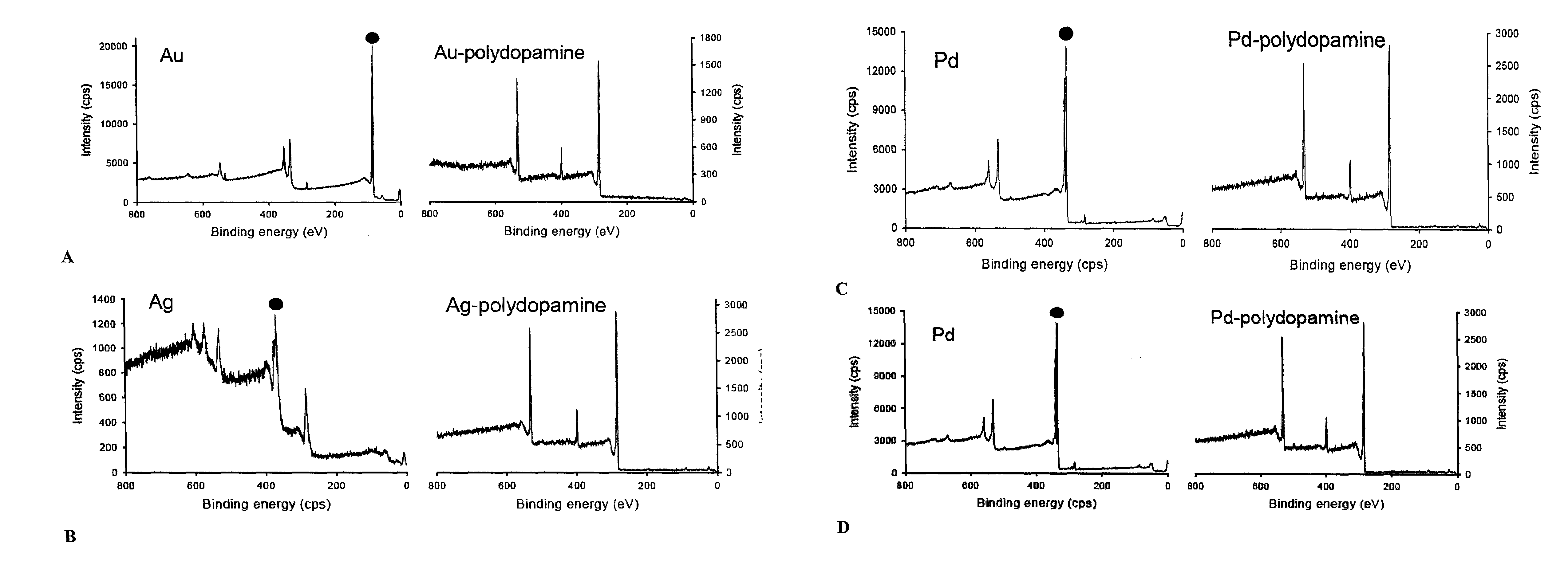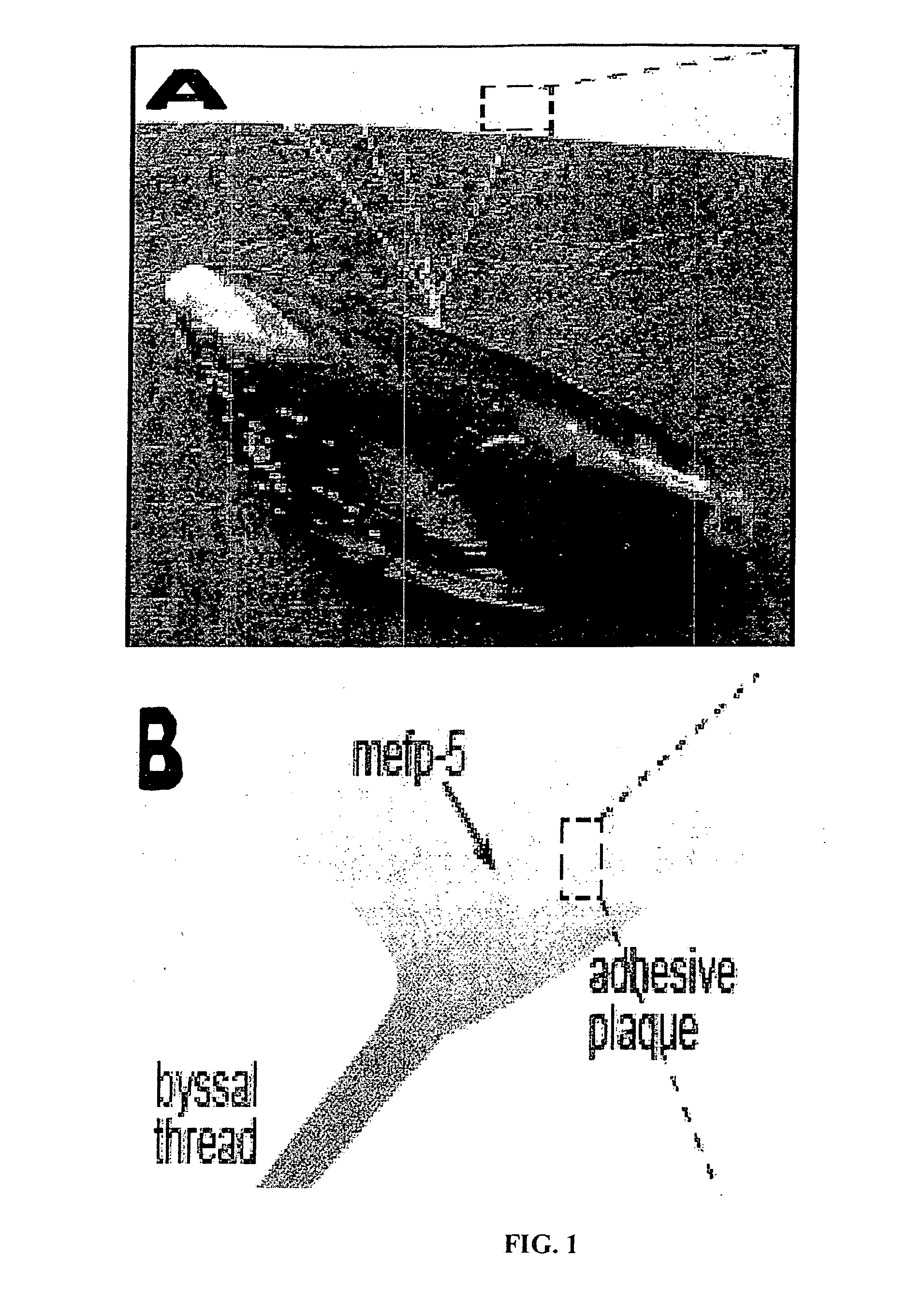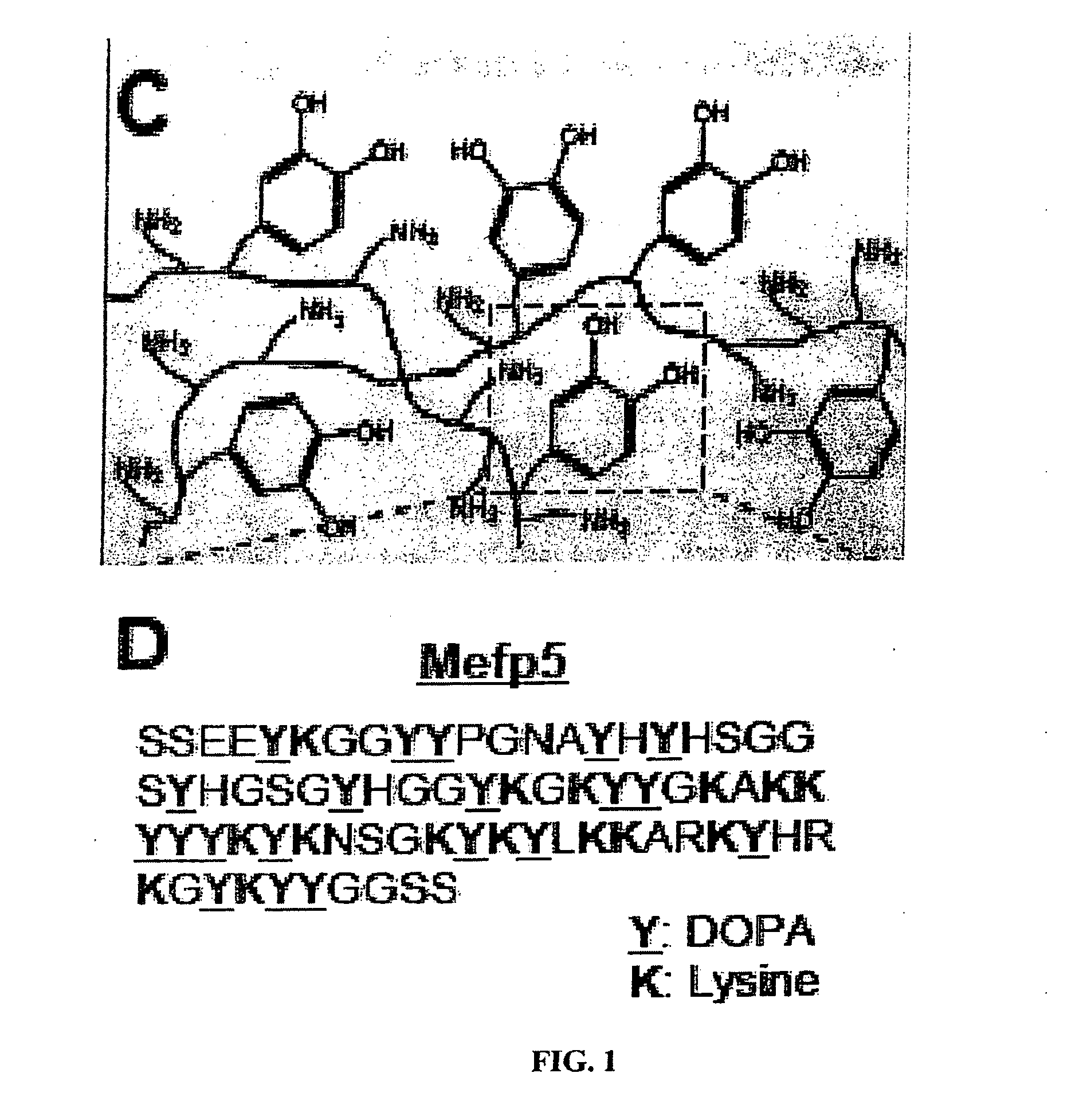Surface-Independent, Surface-Modifying, Multifunctional Coatings and Applications Thereof
a surface modification and multi-functional technology, applied in the field of polymer coatings, can solve the problems of limited substrate size/shape (langmuir-blodgett deposition) and limited use of conventional methods, and the primary limitation of substrates available for conventional surface modification chemistry
- Summary
- Abstract
- Description
- Claims
- Application Information
AI Technical Summary
Benefits of technology
Problems solved by technology
Method used
Image
Examples
example 1
SMA Solution
[0151]As shown herein, simple immersion of virtually any substrate in a dilute alkaline aqueous solution of dopamine buffered to a pH typical of marine environments (pH>7.5) results in spontaneous deposition of a reactive moiety on the substrate surface. In the case of dopamine, the substrate surface forms a thin adherent polymer film (FIG. 1F-1H). Atomic force microscopy (AFM) indicated that the polymer film thickness was a function of the immersion time and reached a value of up to 50 nm after twenty-four hours (FIG. 1G). X-ray photoelectron spectroscopy (XPS) analysis of twenty-five diverse materials coated for three hours or more revealed the absence of signals unique to the substrate (solid bars, FIG. 1H, and FIG. 3), indicating the formation of a polymer coating of 11 nm or more in thickness.
[0152]The atomic composition of the SMA-treated substrate varied little (circles, FIG. 1H), suggesting that the composition of the SMA coating was independent of the substrate....
example 2
SMA-Treated Substrates
[0159]Under oxidative conditions (e.g., pH>7.5), a dilute alkaline aqueous solution of dopamine surprisingly modifies substrate surfaces to include reactive, adherent polydopamine nanofilms. Virtually all natural and synthetic substrates including, without limitation, noble metals (Au, Ag, Pt and Pd), metals with native oxide substrates (Cu, stainless steel, NiTi shape memory alloy), oxides (TiO2, NiTt, SiO2, quartz, Al2O3, and Nb2O5), semiconductors (GaAs and Si3N4), ceramics (glass and hydroxyapatite (HAp), and synthetic polymers (polystyrene (PS), polyethylene (PE), polycarbonate (PC), polyethylene terephthalate (PET), polytetrafluoroethylene (PTFE), polydimethylsiloxane (PDMS), polyetheretherketone (PEEK), and polyurethanes (Carbothane® (PU1) and Tecoflex® (PU2))) (FIG. 1H) were effectively modified using the SMA-treatment of the present invention.
[0160]To date, over twenty-five substrates were successfully modified by a dilute, alkaline solution comprising...
example 3
Untreated Substrates
[0164]In this example, substrates were tested to determine if substrates could be modified according to the present invention in an untreated condition. Accordingly, the following demonstrates that SMA-treated substrates that have not been cleaned (i.e., are used as received) can be modified to include at least one reactive moiety.
[0165]Substrates PEEK and PC were contacted with dopamine in a dilute, alkaline solution (2 mg / mL dopamine dissolved in 10 mM Tris; pH 8.5) for 5 hrs. XPS was used to determine the efficacy of the SMA-treated substrates. The presence of N1s signals (approximately 400 eV) (see FIG. 26A-B) indicated successful polydopamine coating on unclean substrates (bare substrates do not show N1s).
[0166]These results indicate that substrates may be modified according to the present invention, even when such substrates are covered in paint, oil, grease, rust, protectant and the like.
PUM
| Property | Measurement | Unit |
|---|---|---|
| Electrical resistance | aaaaa | aaaaa |
| Surface | aaaaa | aaaaa |
| Solution | aaaaa | aaaaa |
Abstract
Description
Claims
Application Information
 Login to View More
Login to View More - R&D
- Intellectual Property
- Life Sciences
- Materials
- Tech Scout
- Unparalleled Data Quality
- Higher Quality Content
- 60% Fewer Hallucinations
Browse by: Latest US Patents, China's latest patents, Technical Efficacy Thesaurus, Application Domain, Technology Topic, Popular Technical Reports.
© 2025 PatSnap. All rights reserved.Legal|Privacy policy|Modern Slavery Act Transparency Statement|Sitemap|About US| Contact US: help@patsnap.com



